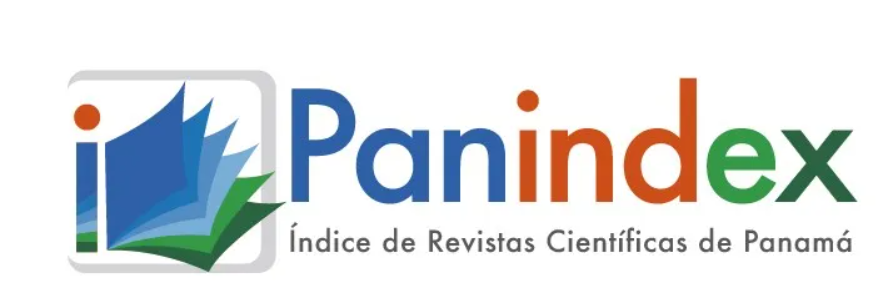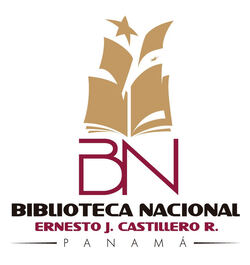The content of the publications and the links suggested in them are the sole responsibility of the authors and not of the Metropolitan University of Education, Science and Technology (UMECIT) or of the journal ORATORES. They are protected by international copyright laws as well as the logos of UMECIT AND ORATORES, hence their reproduction is totally prohibited.
This work is licensed under a Creative Commons Attribution-NonCommercial-NoDerivatives 4.0 International License.
The authors maintain the copyright and transfer the right of the first publication to the journal, with the article registered with Creative Commons Attribution-NonCommercial-NoDerivatives License, which allow others They can download the works published in this magazine and share them with other people, as long as their authorship is recognized, but they cannot be changed in any way nor can they be used commercially.
Authors are recommended to include their work in social networks such as Researchgate and institutional repositories once the article or visible fact has been published on the journal page, without forgetting to include the digital document identifier and the name of the journal.



Abstract
The aim of this essay is to investigate the most relevant characteristics of the main contemporary curricular tendencies, as well as to look at the role that the teacher must play in each of them, so that they can contribute in an effective way to improve the quality of Education. It begins explaining the complexity that underlies from the same moment that it is tried to define what is the education of quality, later three questions are posed: What are the contemporary curricular tendencies? what are their characteristics? And what role does the teacher play within them? After the documentary review and in response to the first question are cited among others (1) curricular flexibility, (2) the focus by competencies, (3) the project approach, (4) the incorporation of manifestations of the hidden curriculum to the curriculum in action, and (5) the inclusion of information and communication technologies (ICT) and the definitions, characteristics and criticisms of each of them are detailed below. It is emphasized that the studied trends can be complemented, since they have common points such as the need to contextualize and the call made to teachers to abandon the traditional teaching paradigms and the comfort zone.
References
Arévalo, M. y Gamboa, A. (2015). TIC en el currículo de matemáticas. Una orientación desde el marco de las políticas y proyectos educativos. RIIEP, Vol. 8, N.º 1. Pp 169-187.
Bogoya, D. (2000). Competencias y Proyectos Pedagógicos. Capítulo: Educar para el desarrollo de las competencias: Una propuesta para reflexionar. Santa Fe de Bogotá. Universidad Nacional de Colombia.
Díaz, A. (2005). La educación en valores: Avatares del currículum formal, oculto ylos temas transversales Universidad Nacional Autónoma de México Centro de Estudios sobre la Universidad.
Díaz, M. (2005). “Flexibilidad y organización de la educación superior”, 63-117, en Flexibilidad académica y curricular en las instituciones de educación superior, René Pedroza Flores, Bernardino García Briceño, comps. México: M.A. Porrúa.
Escalona, L. (2007) Flexibilidad curricular: elemento clave para mejorar la educación bibliotecológica. Centro Universitario de Investigaciones Bibliotecológicas de la UNAM. Investigación bibliotecológica, Vol. 22, Núm. 44, enero/abril, 2008, México, ISSN: 0187-358X. pp. 143-160
González, E. (2007). Formación universitaria por competencias. Centro Interuniversitario de Desarrollo CINDA. Recuperado de https://www.researchgate.net/publication/275275474
Gutiérrez, A. (1997). Educación multimedia y nuevas tecnologías. Madrid: Ediciones de la Torre.
Gutiérrez, A. (2007). Integración curricular de las TIC y educación para los medios en la sociedad del conocimiento. Revista Iberoamericana de Educación, No. 45. Madrid, España, pp 141-156.
ICFES (1999). Nuevo examen de estado, Propuesta General. Santa Fe de Bogotá:
Icontec (2015). Norma ISO 9000 de 2015. Vocabulario del sistema de gestión Calidad.
Informe sobre el desarrollo mundial (2018): Aprender para hacer realidad la promesa de la Educación.
Iriondo, W. (2013). El currículo y la educación a distancia. RIED v. 16: 1, pp 109-132
López I. (2011). Un giro copernicano en la enseñanza universitaria: formación por competencias. Universidad de Sevilla. Facultad de Ciencias de la Educación. Departamento de Didáctica y Organización Educativa. Sevilla, España. Revista de Educación, 356. Septiembre-diciembre 2011, pp. 279-301
McKinsey (2007). Cómo hicieron los sistemas educativos con mejor desempeño del mundo para alcanzar su objetivo
Mondragón, H. (2006). Glosario con terminología básica de apoyo al diseño y ejecución curricular 1, comp., Colombia: Universidad Javeriana de Cali, Colombia. en http://portales.puj.edu.co/ didactica/Archivos/Glosario/GLOSARIO.pdf consultado el 30 de Marzo de 2019.
Moreno, T. (2010). El currículo por competencias en la universidad: más ruido que nueces. Revista de la Educación Superior Vol. XXXIX (2), No. 154, pp. 77-90. ISSN: 0185-2760
Páez, V. (2007). Formación profesional pedagógica, tendencias curriculares y contexto educativo APROXIMACIONES DESDE LA REALIDAD CUBANA. Revista Varona. núm. 45, julio-diciembre, pp. 9-15 Universidad Pedagógica Enrique José Varona La Habana, Cuba.
Pedroza, R. (2005) “La flexibilidad académica en la universidad pública”, pp. 19-41, en Flexibilidad académica y curricular en las instituciones de educación superior, comps. México : M.A., Porrúa.
Pirela, J. (2007). Las tendencias educativas del siglo XXI y el currículo de las escuelas de Bibliotecología, Archivología y Ciencia de la Información de México y Venezuela.
Rodríguez, F. (2012) Proceso de Bolonia: el currículo oculto Facultad de Ciencias de la Salud. Universidad de Las Palmas de Gran Canaria. España.
Santamaría, B. (2013). Pensamiento visible y currículo oculto. Revista Electrónica de Psicología Social «Poiésis»
Tobón, S. (2006). Método de trabajo por proyectos. Madrid: Uninet.
Tobón, S. (2007). El enfoque complejo de las competencias y el diseño curricular por ciclos propedéutico. Grupo CIFE (www.cife.ws)
Downloads
Publication Facts
Reviewer profiles N/A
Author statements
- Academic society
- Universidad Metropolitana de Educación, Ciencia y Tecnología
- Publisher
- Universidad Metropolitana de Educación, Ciencia y Tecnología



















